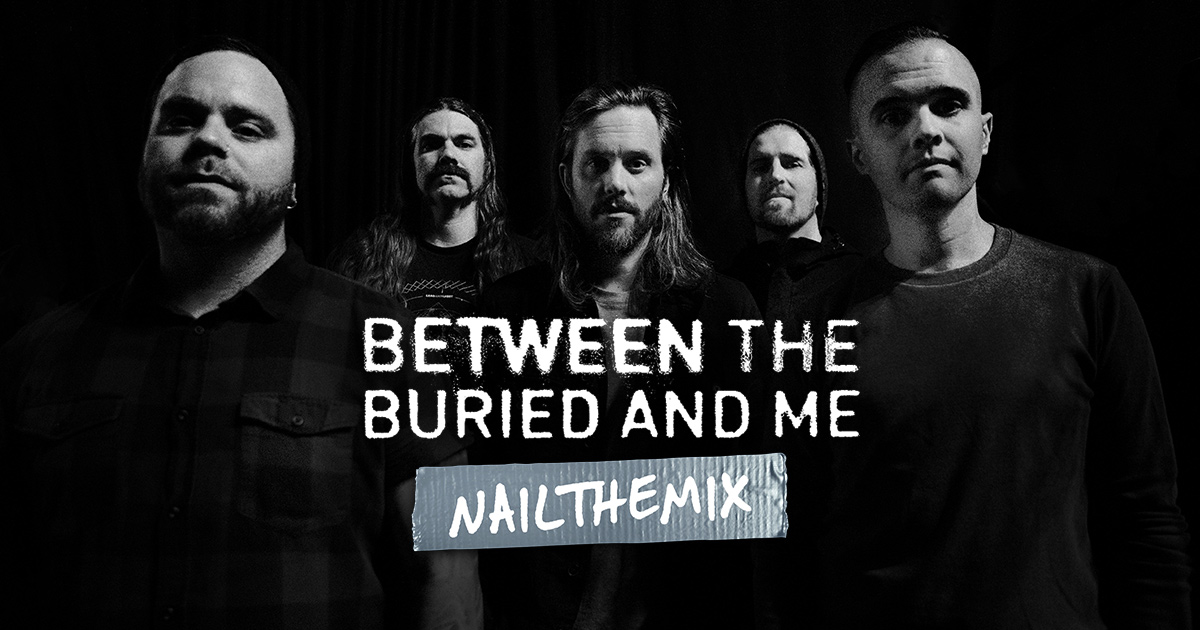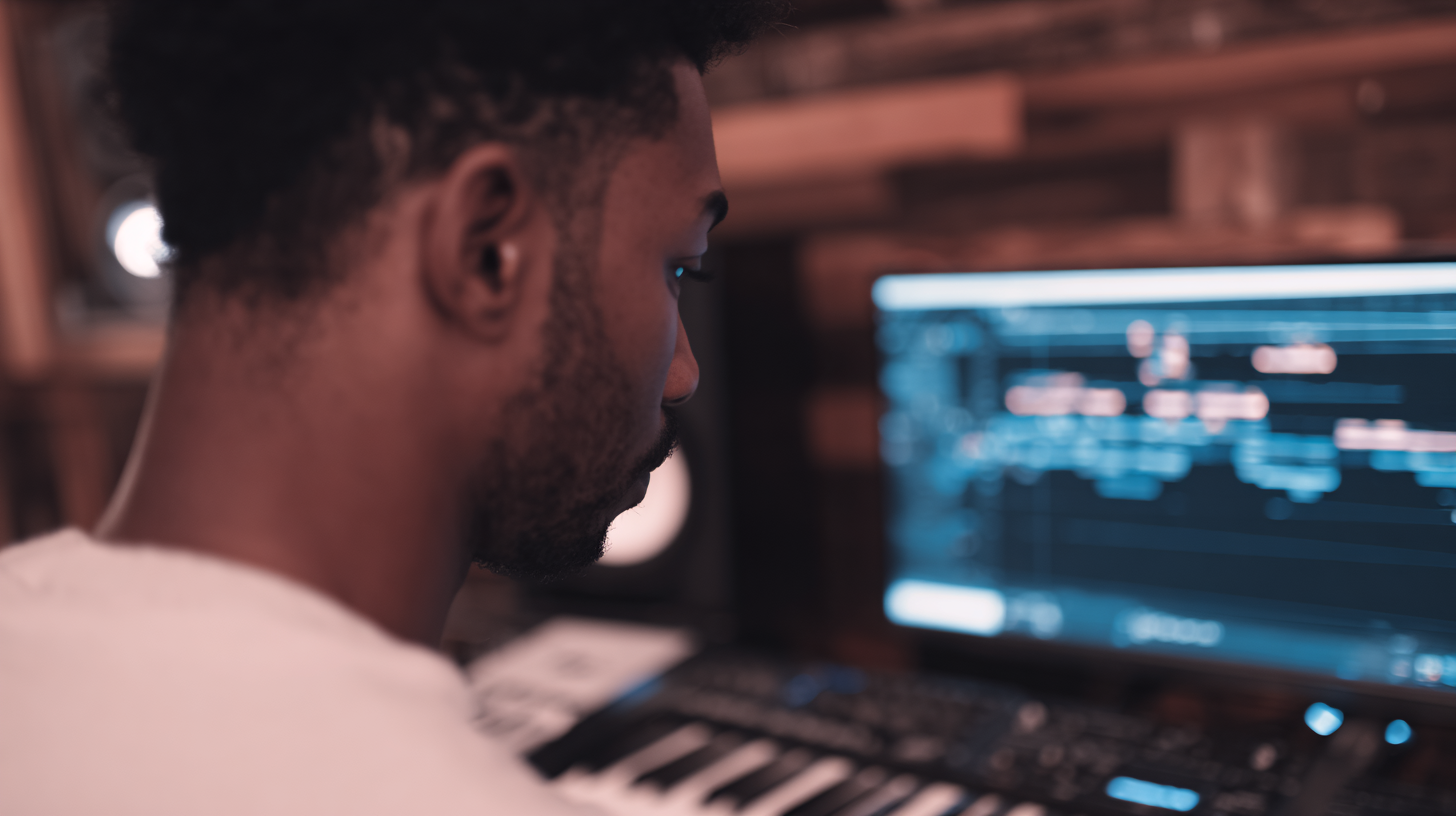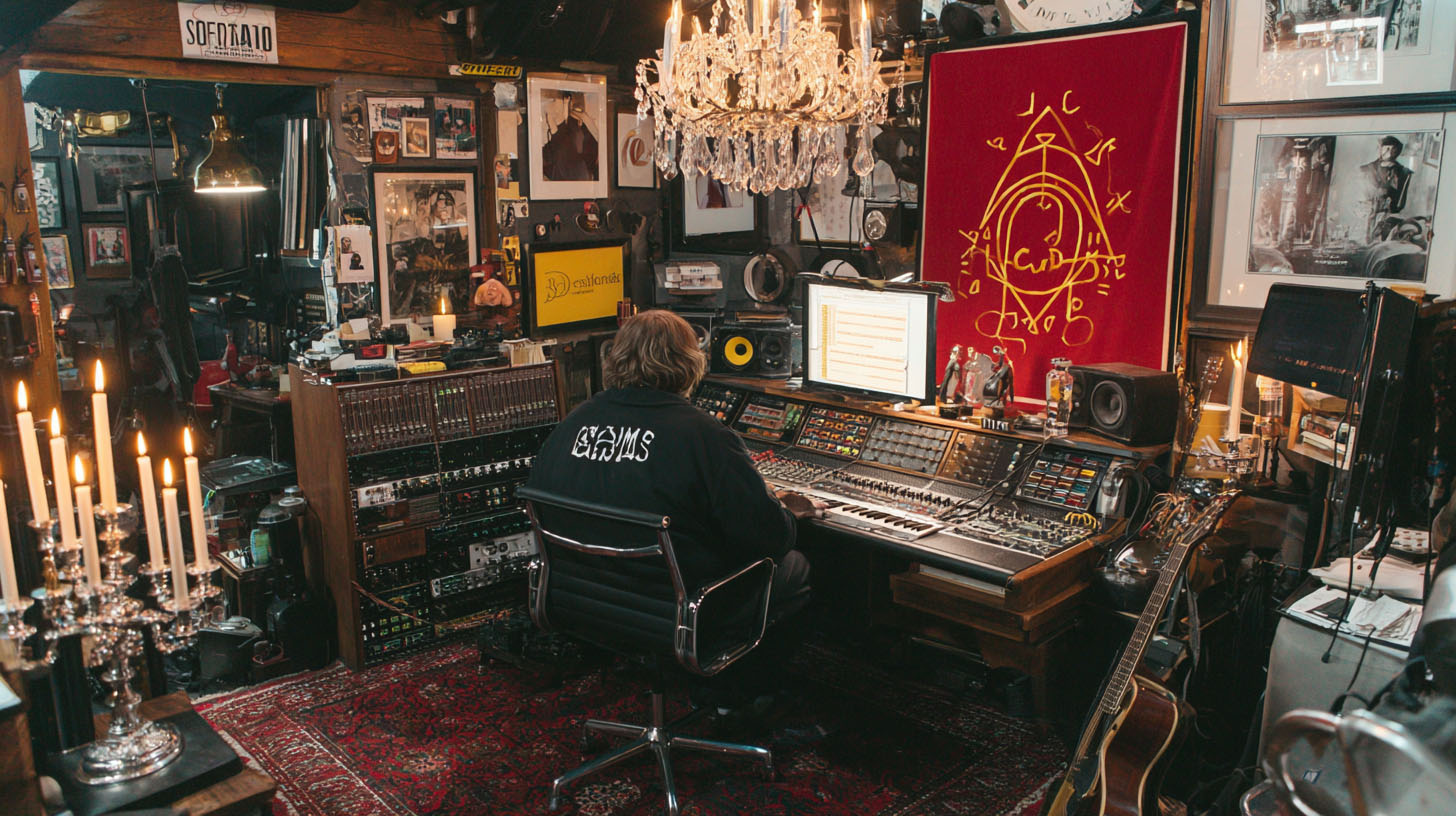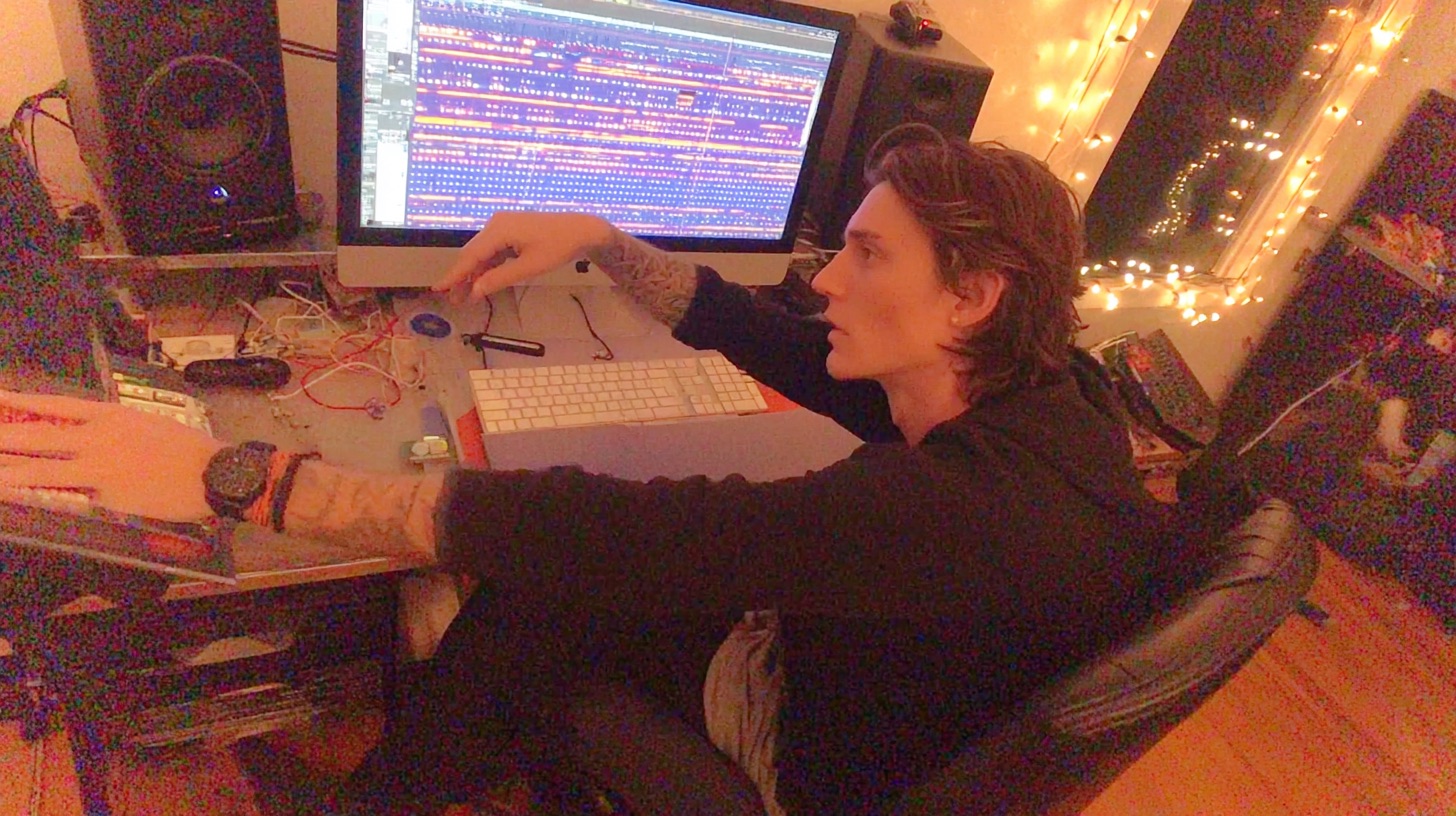
Henrik Udd’s Workflow for Mixing Massive Dayseeker Vocals
Nail The Mix Staff
Rory Rodriguez’s vocal performance on Dayseeker’s “Sleep Talk” is a masterclass in emotion and power. But how do you take a raw performance that’s already incredible and elevate it to fit within a colossal, atmospheric mix? We got a look inside the Pro Tools session with legendary producer Henrik Udd (Bring Me The Horizon, Architects) as he broke down his techniques for polishing these iconic vocals.
Henrik’s process reveals a crucial two-part philosophy: build on a rock-solid foundation, then add your own layers of custom-fit magic. Here’s a look at how he takes a great vocal from tracking engineer Daniel Braunstein and turns it into something truly special, with actionable techniques you can try today. See the master at work for yourself in the full Dayseeker Nail The Mix course.
The Foundation: A “Pre-Cooked” Vocal Chain
Henrik kicks things off by showing the processing already applied to the vocal stems by producer Daniel Braunstein. This isn’t about starting from scratch; it’s about respecting the producer’s vision and using their well-crafted stems as a springboard. This “pre-cooked” chain provides a clean, consistent, and mix-ready starting point.
Taming and Tuning
Right out of the gate, the vocal is cleaned up with a simple noise suppressor to eliminate any unwanted hiss or room tone between phrases. From there, the vocal has already been meticulously tuned. Henrik notes that the track has been committed twice, suggesting a multi-stage tuning process to ensure every note is perfectly locked in without sounding robotic.
EQ and Saturation
With the vocal clean and in tune, it’s time for some character. Daniel’s chain starts with a significant top-end boost using the Waves R-EQ, adding that initial air and presence.
To give the vocal some grit and harmonic complexity, a touch of saturation is added via the Soundtoys Decapitator. This isn’t about heavy distortion; it’s a subtle move that helps the vocal feel more aggressive and glued together.
Control and Polish
To rein it all in, the chain finishes with two classic dynamics plugins. First, a de-esser (in this case, the Waves C6) tames any harsh sibilance that may have been exaggerated by the high-frequency EQ boost.
Finally, the Waves LA-2A provides a final layer of gentle, transparent compression. This iconic optical compressor is perfect for smoothing out the performance and giving it that final, rounded-off polish. This level of strategic compression ensures the vocal sits consistently upfront without feeling squashed.
Building the Ambience: Henrik’s Go-To Vocal FX
With a solid dry vocal, Henrik turns to his established effects templates to create the signature space and atmosphere. He has a suite of go-to sends ready in his session, allowing him to quickly dial in the perfect ambience.
Core Reverbs
For the main vocal reverb, Henrik relies on the Avid ReVibe. He keeps it simple, using a setting with a 2-3 second decay time that’s mostly a factory default. It proves you don’t always need to endlessly tweak to get a great sound.
On the track itself, he uses an instance of ValhallaRoom, blended in at just 16% mix. This adds a subtle, immediate sense of space that helps the vocal sit in the mix without being drenched in a long reverb tail.
Delays for Depth and Impact
Delays are crucial for creating rhythmic echo and dramatic effect. Henrik’s setup includes several instances of the Soundtoys EchoBoy:
- Quarter-Note Delay: A standard, always-on delay with low and high cuts to keep it from muddying up the mix.
- Half-Note Delay: This one is reserved for big, automated “delay throws.” Think of those moments at the end of a phrase where the vocal explodes into a long, trailing echo.
- Medium Hall Delay: Another delay, set to a medium hall at about two seconds, offers a different textural option.
Ethereal Textures and Color
To add width and otherworldly textures, Henrik uses a few more creative effects:
- Chorus: A stereo chorus from Soundtoys adds a simple widening effect.
- Shimmer & Blackhole: For huge, atmospheric pads and tails, Henrik turns to the Eventide H9 Shimmer and Eventide Blackhole. Set to 100% wet, these create beautiful, evolving textures that are perfect for modern metalcore.
Henrik’s Mix Polish: Taking Great to Epic
This is where Henrik Udd puts his signature stamp on the track, using surgical EQ and clever problem-solving to make the vocal shine.
Final EQ Shaping
Henrik’s EQ strategy is both subtractive and additive.
- The Cut: Using FabFilter Pro-Q 3, he makes a precise cut around 234 Hz. This removes a specific “toppy” or boxy frequency, cleaning up the low-mids and preventing mud.
- The Boost: He then uses a Pultec-style EQ to add that final polished sheen. He simultaneously boosts at 100 Hz for body and 10 kHz for air. The magic of a Pultec is that the linked attenuation band gently rounds off the top-end boost, adding brightness without harshness. He also notes that the NoiseAsh Rule Tec is another amazing plugin for this job.
Advanced Automation: Taming Harshness
Here’s a pro-level tip for any vocalist or producer. Henrik notes that on long, sustained notes, a harsh frequency can build up—often around 800 Hz or 1 kHz. Instead of a static EQ cut that would affect the entire track, he automates a new, narrow-Q EQ to dip that specific frequency only during the problematic long notes. This is a surgical move that cleans up the vocal without thinning it out.
The Ultimate Hack: EQ Matching
In a moment of “why does this other track sound better?”, Henrik pulled out his ultimate problem-solving tool. He felt the vocals on Dayseeker’s song “Drunk” had a slightly more pleasing character.
To figure out why, he used an EQ matching plugin. Here’s the process:
- Capture Reference: He captured the frequency spectrum of the vocal from “Drunk.”
- Capture Source: He then captured the spectrum of the “Sleep Talk” vocal.
- Apply the Difference: The plugin generated an EQ curve to make “Sleep Talk” sound more like “Drunk.”
The key, as Henrik advises, is to use this tool conservatively. Instead of slapping it on at 100%, he uses it to see the main differences—maybe the reference vocal had a little less 2kHz or a bit more 400Hz. This trick gave him a clear roadmap for the subtle tweaks needed to get the exact vocal character he was after.

100+ Insanely Detailed Mixing Tutorials
We leave absolutely nothing out, showing you every single step
Bringing It All Together
Mixing an epic vocal is a journey. It starts with a great performance and a solid tracking chain, gets depth from a versatile palette of effects, and is perfected with surgical EQ and creative problem-solving.
Dayseeker on Nail The Mix
Henrik Udd mixes "Sleeptalk"
Get the Session
Reading about these techniques is a great start, but there’s nothing like seeing them in action. On Nail The Mix, you can watch world-class producers like Henrik Udd mix legendary songs from start to finish, explaining every plugin choice and every automation move. If you’re ready to stop guessing and start learning the methods the pros use to craft incredible mixes, it’s time to Unlock Your Sound and dive into the full Dayseeker session with Henrik Udd.
Get a new set of multi-tracks every month from a world-class artist, a livestream with the producer who mixed it, 100+ tutorials, our exclusive plugins and more
Get Started for $1





